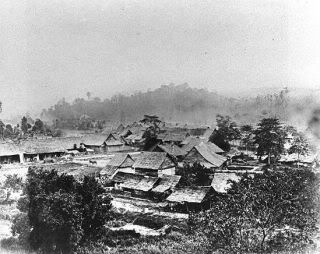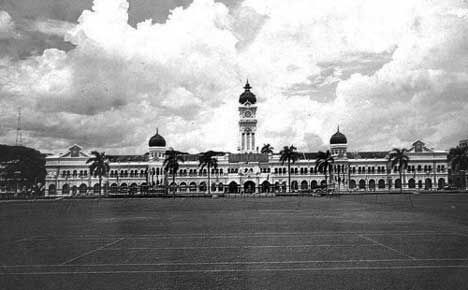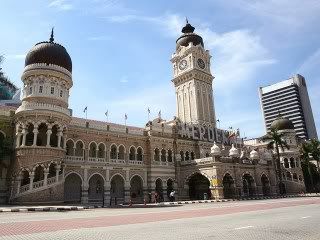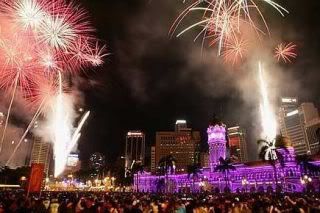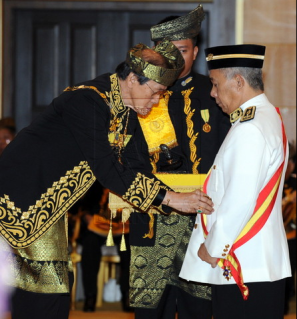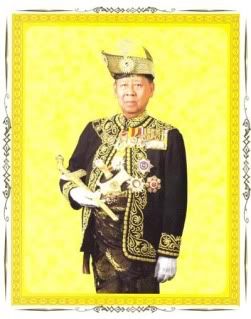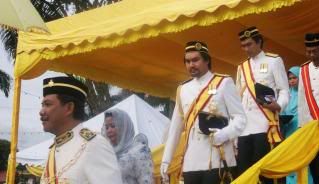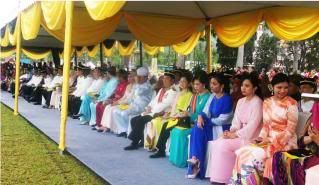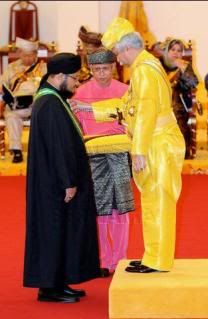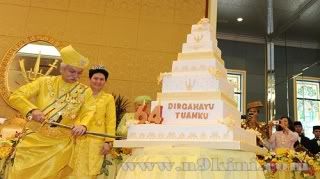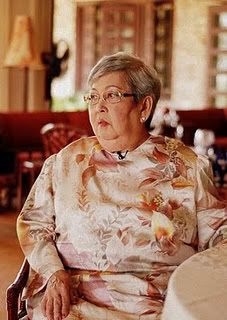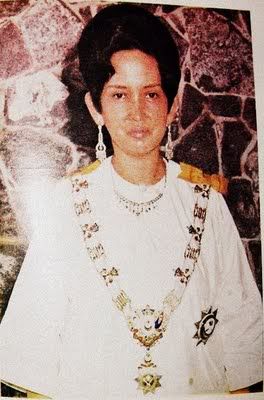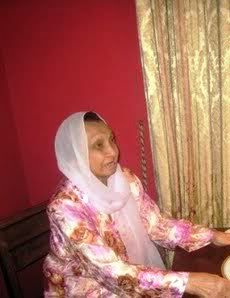For today architecture segment, we will cover the building that has been a landmark of Kuala Lumpur for many years, the Sultan Abdul Samad Building. The building is almost a smaller version of Malaysian Westminster Palace. The building were named after the Sultan of Selangor during the construction of the building began, His Highness the Sultan Abdul Samad.
The building is a 17.5m two-storey building. In the middle, there standing the Clock Tower with a height of 41.5m and three domes. The building covers an area of 10,200 meter square.
HISTORY
Kuala Lumpur in 1900
After the Sultanate of Selangor became a British Protectorate, the British Administration wanted to build a government office to govern the state efficiently. At that time, the Capital of Selangor, Klang is not a strategic location for administration as it is too far from the more developed area like Kuala Lumpur. The Sultan Abdul Samad who ruled from 1857 to 1898 later consent to change the State Capital from Klang to Kuala Lumpur.
When Kuala Lumpur became the Capital of Selangor, it only consists of several streets of shop houses and several non-prominent government office buildings. Thus, the Resident of Selangor at that time, W.E Maxwell wanted the new government office to be a prominent landscape of Kuala Lumpur. The idea and architectural design has started as early in 1889, when Maxwell invited an English Architect Arthur Charles Alfred Norman as State Architect and C.E Spooner from Ceylon as State Engineer. The original plan of the building from Norman was adapting the Classical English Rennaisance concept. But, Spooner does not satisfy with the design. Later, a young architect named Bidwell has made a modification with Norman design, adapting the Mahometan style concept of Moor and Moghul design as the main architectural design of the building.
The building construction was commissioned in 1894. On October 6, 1894, the ground breaking ceremony of the building was done by the Governor of Straits Settlements, Sir Charles B.H. Mitchell. The estimated cost of the construction was $152,000 and will take 2 years and 7 months to complete. After the construction fully completed on April 1897, the real expenses was $152,824. The building materials were delivered from masonry in Brickfield. The building was inaugurated by the Resident-General of the Federated Malay States, Sir Frank Swettenham on April 4, 1897 and was known as the New Government Office. Among the offices that been located here were Government Secretariat Office, State Council Chamber, Post Office, Sanitary Board, Judicial Commissioner, Public Work Department and District Office.
New Government Office
In 1948, when the Federation of Malaya was formed to replace Malayan Union, the building was renamed as Federal Secretariat. The building still retains its function after the independence of Malaya in 1957 and the formation of Malaysian in 1963. It is until 1974 where all of the State of Selangor Government offices were relocated to Shah Alam. The Federal Government also relocated its office to new building at Jalan Duta. And, for the first time, the building was renamed Bangunan Sultan Abdul Samad. A major renovation works takes place in 1978, takes 6 years to complete with an expenses of RM 17.2 million. The roof was change into a new one, and the wooden dome was change with a copper dome. The Supreme Court, Appeal Court and Malaya High Court were placed here in 1978 before it had been relocated in 2007 at a new complex in Jalan Duta. The Ministry of Information, Communications and Culture of Malaysia currently occupied the building.
Below is some of the panorama of the building. The Moor and Moghul architecture exist in the building later became a standard architecture design in any construction built during the time of British Administration in Malaya.
EVENT
A historical event witness by the building is when Malaya achieving her independence from United Kingdom in 1957. This is the place where the Union Jack flag was replaced by Jalur Gemilang for the first time. It is also a venue of New Year Celebration every January 1 and Independence Parade every August 31. It is also the place of Trooping the Colour ceremony and Warriors Day Celebration.

Independence Parade
2011 New Year Celebration
 His Royal Highness the Raja Muda (Crown Prince) of Perak, Raja Nazrin Shah ibni Sultan Azlan Shah consent to attend and chaired the 178th Conference of Majlis Agama Islam dan Adat Melayu Perak (MAIAMP), Perak Islamic Religious and Malay Customs Council held at Kompleks Islam Darul Ridzuan. Also attended the ceremony were Menteri Besar (Chief Minister) of Perak, Datuk Seri Dr Zambry Abd Kadir and the Mufti of Perak, Tan Sri Dr. Harussani Zakaria.
His Royal Highness the Raja Muda (Crown Prince) of Perak, Raja Nazrin Shah ibni Sultan Azlan Shah consent to attend and chaired the 178th Conference of Majlis Agama Islam dan Adat Melayu Perak (MAIAMP), Perak Islamic Religious and Malay Customs Council held at Kompleks Islam Darul Ridzuan. Also attended the ceremony were Menteri Besar (Chief Minister) of Perak, Datuk Seri Dr Zambry Abd Kadir and the Mufti of Perak, Tan Sri Dr. Harussani Zakaria. RSS Feed
RSS Feed Twitter
Twitter




